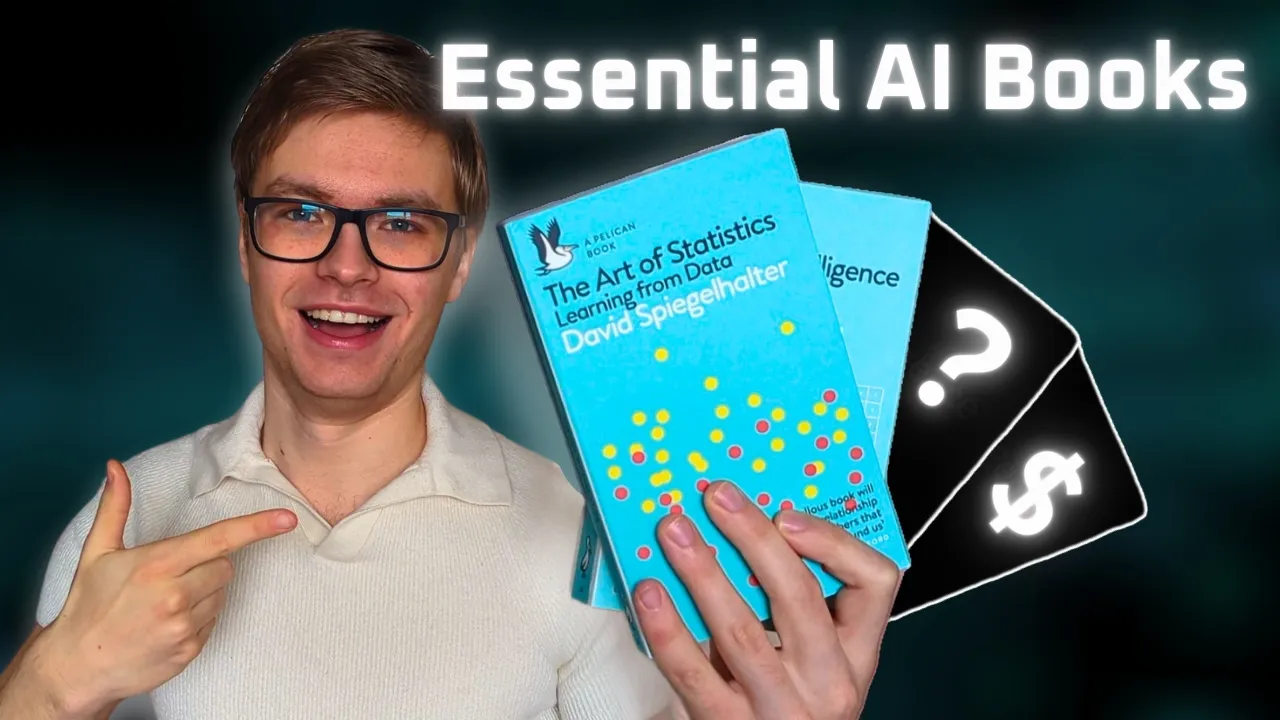Building Your AI Knowledge Foundation Beyond Technical Skills
The path to becoming an exceptional AI engineer isn’t just about mastering the latest frameworks or memorizing model parameters. The engineers who create impactful AI solutions understand that conceptual foundations matter just as much as coding skills. This foundation comes from developing mental models that help navigate the complex landscape of AI development.
Building this knowledge foundation is crucial for anyone following the comprehensive AI engineering career path, which emphasizes both technical implementation and conceptual understanding.
The Power of Historical Context
One of the most valuable perspectives an AI engineer can develop comes from understanding AI’s evolution before the current hype cycle. Books like Melanie Mitchell’s “Artificial Intelligence: A Guide for Thinking Humans” provide this critical foundation by examining AI development across multiple domains and eras.
This historical context reveals important patterns: how AI enthusiasm rises and falls in waves, how progress in one area doesn’t necessarily translate to others, and how seemingly advanced systems can have surprising limitations. Engineers who understand these patterns can make more realistic assessments about current capabilities and future directions.
When you understand, for example, how vision models can be fooled by carefully crafted inputs (like special glasses that trick facial recognition), you develop a healthy skepticism about claimed capabilities that transfers directly to your work with generative AI systems. This skepticism leads to more robust implementations and better user experiences.
Statistical Thinking as a Competitive Advantage
Statistical literacy provides another crucial mental framework that separates exceptional AI engineers from average ones. David Spiegelhalter’s “The Art of Statistics: Learning from Data” cultivates this thinking pattern, which proves invaluable when designing evaluation frameworks for AI systems.
Consider how statistical understanding changes how you might approach testing a generative AI application:
- Recognizing when sample sizes are too small to draw meaningful conclusions
- Identifying when test cases aren’t representative of real-world usage
- Understanding how to segment analysis to reveal performance variations across different user groups
These skills help engineers move beyond simplistic metrics to develop nuanced evaluation frameworks that reveal how systems will actually perform when deployed. This leads to more reliable applications and more accurate predictions about system behavior.
Philosophical Grounding for Ethical Implementation
The philosophical dimensions of AI development inform how engineers approach their craft at a fundamental level. Books like Nick Bostrom’s “Superintelligence” encourage thinking about the nature of intelligence itself and the potential trajectories of AI development.
While these concepts may seem abstract, they directly influence practical decisions about:
- How to establish appropriate guardrails for AI systems
- Which capabilities should be developed or limited
- How to evaluate potential societal impacts of AI applications
Engineers with this philosophical grounding are better equipped to anticipate unintended consequences and design systems with appropriate limitations and safeguards built in from the beginning.
Architectural Patterns with Staying Power
Perhaps the most directly applicable knowledge comes from understanding AI architectural patterns that transcend specific implementations. Concepts like Retrieval-Augmented Generation (RAG) represent approaches that will maintain relevance even as underlying technologies evolve. Understanding the complete RAG implementation guide provides a perfect example of how architectural knowledge transcends specific tools.
By grasping the fundamental principles behind these architectures – what problems they solve, what components they require, and what tradeoffs they involve – engineers can design systems with greater longevity and adaptability. This knowledge helps practitioners distinguish between fleeting implementation trends and enduring architectural principles.
Community Learning as a Force Multiplier
Individual study builds the foundation, but community learning accelerates and deepens understanding. When engineers discuss concepts, challenge assumptions, and share experiences, they discover new applications and perspectives that might never emerge from solitary study.
Participating in AI engineering communities provides:
- Exposure to diverse implementation approaches
- Critical feedback on design decisions
- Awareness of emerging challenges and solutions
- Motivation to continue learning and experimenting
This collaborative dimension transforms theoretical knowledge into practical wisdom that can be applied to real-world problems. The specific job requirements companies look for often emphasize this ability to combine theoretical understanding with practical implementation.
Beyond Tutorial Culture
The difference between implementation-focused learning and concept-focused learning is profound. Tutorial culture teaches you how to reproduce specific solutions, while conceptual learning equips you to design novel approaches to new problems.
Engineers who invest in building their conceptual foundation develop:
- Greater adaptability when technologies change
- Better intuition about which approaches will work for new problems
- More effective debugging skills when systems behave unexpectedly
- Clearer communication with stakeholders about capabilities and limitations
These advantages lead to more successful projects, more innovative solutions, and ultimately, a more rewarding career path in AI engineering.
To see exactly how to implement these concepts in practice, watch the full video tutorial on YouTube. I walk through each knowledge domain in detail and show you the technical aspects not covered in this post. If you’re interested in learning more about AI engineering, join the AI Engineering community where we share insights, resources, and support for your journey. Turn AI from a threat into your biggest career advantage!

